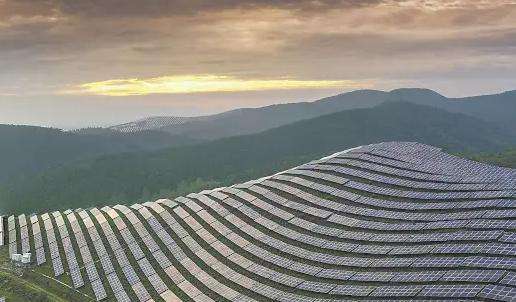1. Monocrystalline Silicon Solar Cells: Monocrystalline silicon solar cells are one of the most common and mature solar cell technologies. They have high efficiency and long service life, and can provide stable performance under different environmental conditions.
2. Polycrystalline Silicon Solar Cells: Polycrystalline silicon solar cells are another common type of solar cell. Their manufacturing process is relatively simple and inexpensive, but their efficiency is slightly lower than that of monocrystalline silicon cells.
3. Thin-film solar cells: Thin-film solar cells are made of one or more layers of thin-film materials, such as amorphous silicon, copper indium gallium selenide, or perovskite. They have low manufacturing costs and high flexibility. for applicationsflexible solar cells.
What are the advantages of flexible solar panels compared to ordinary crystalline silicon?
Thin films deposited on the surface of solar cells generally include the following functional components:
1. Light absorption layer (absorbing layer): The light absorption layer of the solar cell is the most critical thin film component. It can absorb light energy and convert it into electrical energy. Common light-absorbing layer materials include silicon (Si), copper-indium-gallium selenide (CIGS), copper-indium-sulfur selenide (CISS), etc.
2. Transparent conductive layer: The transparent conductive layer is used to collect the current generated by the photovoltaic cell and transmit it to the external circuit. Common transparent conductive layer materials include tin oxide (SnO2) andindium tin oxide (ITO).
3. Light-reflecting layer (back reflector): The light-reflecting layer is located between the light-absorbing layer and the substrate to improve light utilization. It is usually made of metal or metal oxide, such as aluminum (Al), silver (Ag) or aluminum foil (Aluminum Foil).
4. Passivation layer: The battery protective layer is used to protect the surface of the photovoltaic cell from damage caused by the external environment, while reducing the contact between the photovoltaic cell and environmental impurities. Common battery protective layer materials include aluminum oxide (Al2O3), silicon nitride (Si3N4), etc.
5. Encapsulation layer: The encapsulation layer is used to protect photovoltaic cells from external environments such as humidity, oxygen and dust.Common materials for encapsulation layers include polymeric materials, such as epoxy resin (Epoxy Resin), polymethyl methacrylate (PMMA), etc.
Flexible thin film solar cells have advantages over conventional solar cells:
1. Structural advantages:
Conventional solar. Cells The battery is usually a structure with EVA material and battery sheets in the middle of two layers of glass. These components are heavier and require supports during installation, making them difficult to move. Flexible thin film solar cells do not require glass backsheets or covers and are 80% lighter than double glass solar cell modules. Flexible battery sheets with VC backplane and ETFE film can even be folded as desired, making them easy to transport.
2.Advantages:
Can be used in solar backpacks, solar convertibles, solar flashlights, solar cars, solar sailboats and even solar airplanes. The scope of use is relatively wide. The disadvantage is that the photoelectric conversion efficiency is lower than that of conventional crystalline silicon components. There is also a semi-flexible solar panel with a high conversion rate that can only be bent about 30 degrees. Guangrui Industrial Co., Ltd. is relatively mature in the production of solar panels for this type of product.
3. Advantages of assembly:
Dye-sensitized solar cells and organic perovskite solar cells combined with nanotechnology have obvious advantages in the assembly of materials and devices and are currently more common in the world. flexible solar cells.
To obtain thisHigh-performance dye-sensitized flexible solar cells and promote their industrialization, advancements should be sought in the following aspects. On the one hand, there is a need to further improve the photoelectric conversion efficiency and stability of dye-sensitized flexible solar cells. Another aspect is to further reduce the cost of batteries and enable the preparation of large-scale roll-to-roll printing.














